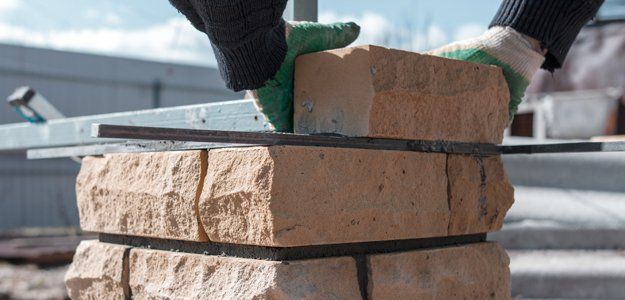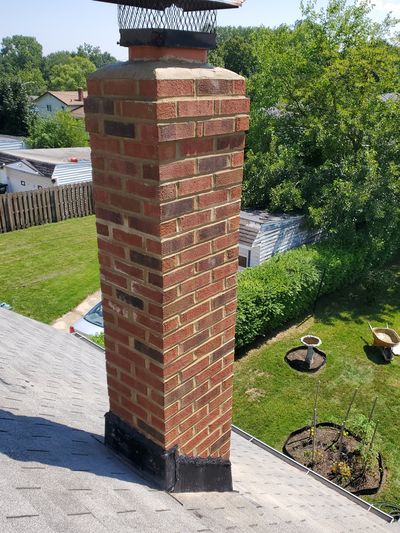Facts About Step Repair Uncovered
Table of ContentsThe Facts About Roofing Contractor RevealedAbout Chimney ServicesThe Best Guide To Patio InstallationThe 9-Minute Rule for Chimney Flashing And Cap RepairAbout Paver Installation5 Easy Facts About Step Repair Explained

The acid dissolves all the carbonate-containing minerals not just in the binder, but likewise in the accumulation (such as oyster shells, coral reefs sands, or other carbonate-based products), as well as any other acid-soluble materials. The sand and also fine-grained acid-insoluble product is left. There are numerous variations on the basic acid food digestion examination.
Straightforward acid food digestion methods are fast, economical, and easy to perform, yet the information they give regarding the initial structure of a mortar is restricted to the shade as well as appearance of the sand. The gas collection technique supplies more details regarding the binder than an easy acid digestion test. analysis approaches that have been used to assess mortars include polarized light or thin-section microscopy, scanning electron microscopy, atomic absorption spectroscopy, X-ray diffraction, and differential thermal evaluation.
The Buzz on Tuckpointing
Historical mortars were not prepared to directly defined specifications from products of uniform high quality; they include a vast array of locally obtained products combined at the discretion of the mason. While a certain method could be able to properly establish the original proportions of a lime-cement-sand mortar prepared from contemporary materials, the effectiveness of that approach for reviewing historical mortars is doubtful unless it has actually been evaluated versus mortars prepared from products a lot more typically utilized in the past.
It is a common mistake to presume that solidity or high strength is a procedure of appropriateness, specifically for lime-based historical mortars. Stresses within a wall surface brought on by growth, contraction, moisture movement, or negotiation should be suited somehow; in a stonework wall, these tensions need to be eased by the mortar instead than by the masonry devices.
High lime mortars are more absorptive than denser cement mortars. Historically, mortar functioned as a bed linen materialnot unlike a growth jointrather than a "glue" for the masonry devices, as well as wetness was able to move through the mortar joints rather than the masonry devices. When wetness evaporates from the masonry it deposits any soluble salts either on the surface area as efflorescence or below the surface as subflorescence.
The Basic Principles Of Step Repair
If the mortar does not permitmoisture or moisture vapor to migrate out of the wall surface and evaporate, theresult will be damage to the masonry systems. Sand is the largest component of mortar and the material that offers mortar its unique shade, structure and also cohesiveness. Sand must be devoid of pollutants, such as salts or clay.


A Biased View of Roofing Contractor
For repointing, portland cement need to adapt to ASTM C 150. White, non- discoloring portland cement may offer a far better shade suit for some historical mortars than the more typically readily available grey portland cement. It should not be thought, however, that white rose city concrete is always proper for all historic structures, because the original mortar may have been blended with grey concrete.
For this reason, they normally are not concrete footings recommended for usage on historic masonry buildings. Moisturized lime mortars, as well as pre-blended lime putty mortars with or without a matched sand are readily offered. Custom mortars are likewise readily available with color. In many instances, pre-blended lime mortars having sand may not provide a precise match; nonetheless, if the task requires complete repointing, a pre-blended lime mortar might be worth considering as long as the mortar is suitable in strength with the stonework.
If a preblended lime mortar is to be utilized, it should contain Type S or SA moisturized lime adapting to ASTM C 207. Water must be potableclean and also without acids, alkalis, or various other liquified organic materials. Along with the color of the sand, the texture of the mortar is of important relevance in duplicating historic mortar.
All about Masonry Contractor
The usage of antifreeze substances is not advised. They are not very efficient with high lime mortars and may present salts, which may trigger efflorescence later.
For repointing, lime must adapt ASTM C 207, Kind S, or Type SA, Hydrated Lime for Stonework Purposes. This machine-slaked lime is made to ensure high plasticity and water retention. Using quicklime which must be slaked and saturated by hand might have advantages over hydrated lime in some repair jobs if money and time enable.
For repointing, portland concrete must adapt ASTM C 150. White, non- staining portland concrete might give a better shade suit for some historical mortars than the a lot more commonly offered grey portland concrete. It should not be presumed, nevertheless, that white portland concrete is constantly appropriate for all historical buildings, because the original mortar might have been mixed with grey cement.
10 Easy Facts About Patio Installation Described
Moisturized lime mortars, and also pre-blended lime putty mortars with or without a matched sand are commercially available. chimney services. In most instances, pre-blended lime mortars including sand might not offer an exact suit; nevertheless, if the project calls for overall repointing, a pre-blended lime mortar might be worth taking into consideration as long as the mortar is suitable in stamina with the masonry.
In either instance, if a preblended lime mortar is to be made use of, it should consist of Type S or SA hydrated browse this site lime adapting ASTM C 207. Water ought to be potableclean as well as totally free from acids, antacid, or various other dissolved natural materials. Along with the shade of the sand, the structure of the mortar is of vital relevance in duplicating historical mortar.
Selection of admixtures must be made by the designer or architectural conservator as part of navigate to this site the requirements, not something consistently included by the masons. Normally, modern chemical ingredients are unneeded and also may, as a matter of fact, have destructive impacts in historic masonry tasks. Making use of antifreeze compounds is not recommended. They are not extremely reliable with high lime mortars and may present salts, which might trigger efflorescence later on.